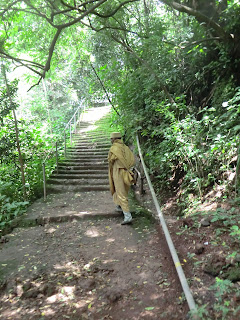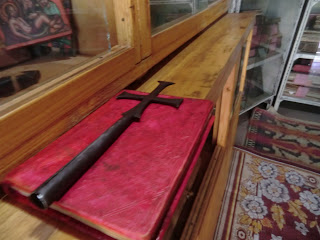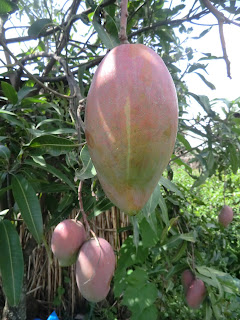
The Nile River begins in Lake Tana in Ethiopia, one of the largest fresh water lakes in Africa. In Lake Tana there are four islands, all containing Orthodox monasteries. These are very important historical sites in Ethiopia’s history, and many of the kings have visited them or have stayed on the islands at times in history. The people living in these monasteries have dedicated their lives to God and there is no looking back. I took a boat ride with Netsanet to check them out.
The first one was a female monastery. There are only a few men living on this island, as they must administer the services. This monastery has been here since the 1300s, and it doesn’t seem like life has changed much at all, save that they have more income in the last 10 years due to tourism (which probably has altered their lifestyle). The island is beautiful and more or less is what the landscape should look like. On this island there is a structure that leads to a cave, and during Easter a bunch of them go in and for 50 days they stay, without light, and eat once a day a handful of what amount to some nuts. Otherwise, the rest of the year, they eat one meal per day at 4pm, containing no meat products. Mostly just injera, and maybe some fruits.
Being guided by a female monk up the island:

The view you get when you become a monk on this island:

The second monastery was the neighboring island which is all male. Females today are still not allowed to enter pass the dock. The monks consider it impure to view females. This monastery was founded in 1313. We were guided by one of the monks, who was actually quite friendly and even smiled (another Ethiopian on the tour explained that most monks don’t want to talk to tourists at all, but this one has adjusted as he accommodates the tourists asking lots of questions and being friendly). On the way down, we passed one monk who lowered his head and hid himself as he walked by, indicating he did not want to talk. They have built a tiny museum on the island, filled with all the original texts (written on goat skin), and even the original cross of the founding monk from 1313. Many kings throughout time have also given crowns as gifts to the monastery. On this island, there are about 80 monks. Some of them actually go to the mainland during the day to work. They consider all the property of the island, and any income generated by tourism, as property of the Orthodox Church (communism eh?). On the island I saw monks amongst the trees in various places studying the Bible or other religious texts. Others, just sitting and passing the day.
Approaching the male monastery by boat:

Massive doors on the church!

Ringing the bells from the 1600s. Different rings give the monks different cues:

The original cross from the founder of the male monastery, from the 1300s.

Waters were rough enough to have to wait 30 minutes before heading back out!:

The third island was a flat one, very marsh like. This island is essentially at the inlet between Lake Tana and the beginning of the Nile river. By this time, I was monked out and decided not to enter the monastery (the tourist price is 5x the Ethiopian price). But here, there are also normal people living on the island. They are growing fruit and selling it back on the main land. Bananas, papayas, mangos, etc. Plus chat, coffee, cabbage, corn and other. They also fish still in traditional style boats. We tried some bananas, they were incredible, no comparison to the bananas we get in the US or here in Europe. And picked a few coffee beans to try, as well as some chat, which is bitter and disgusting (and basically is just like coffee but closer to espresso).
Spotted this guy, look at his canoe!

A coffee bean (with the skin still on):

Massive mangoes!

Our new friend from Addis picking some chat for us to try:


